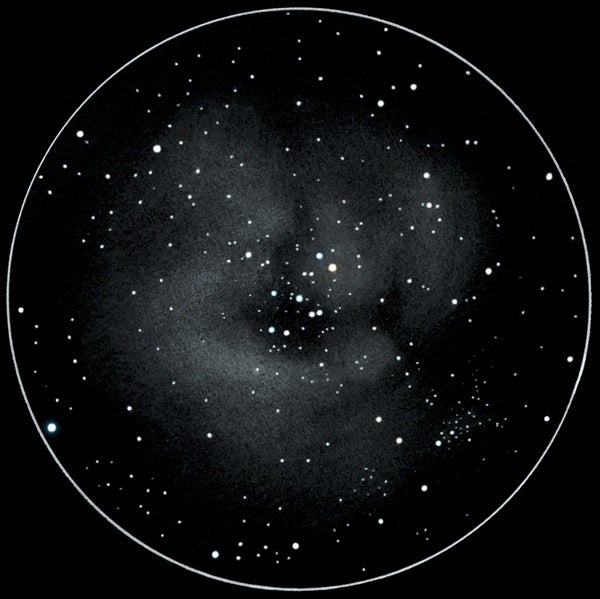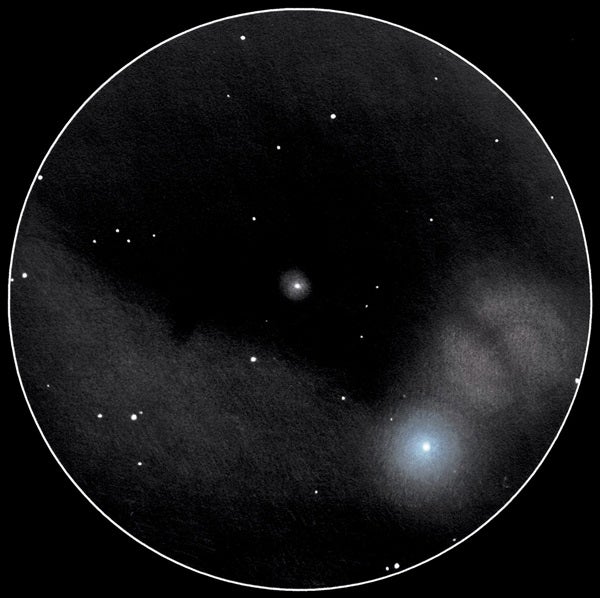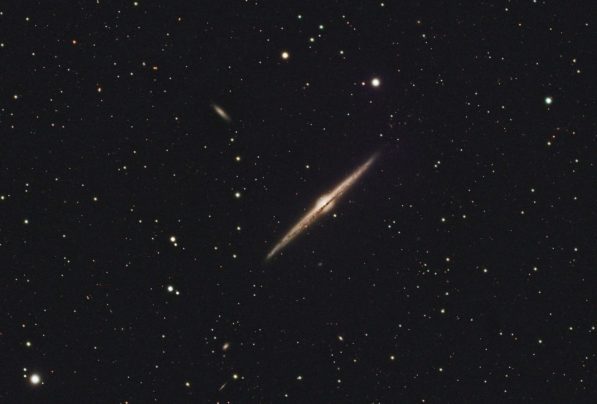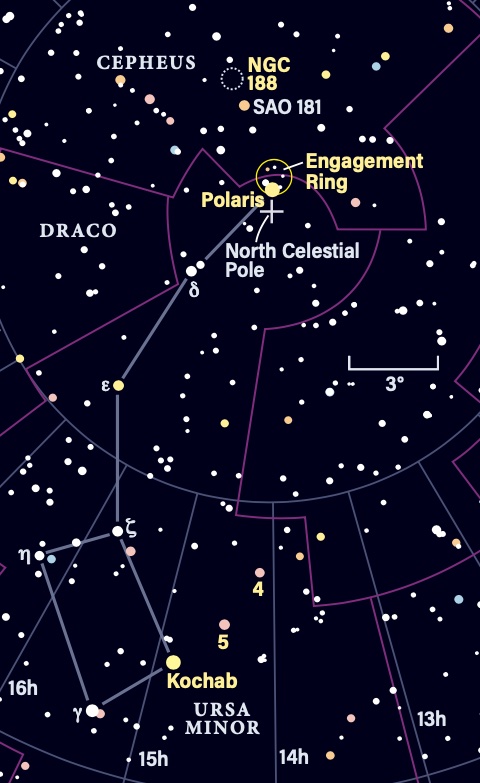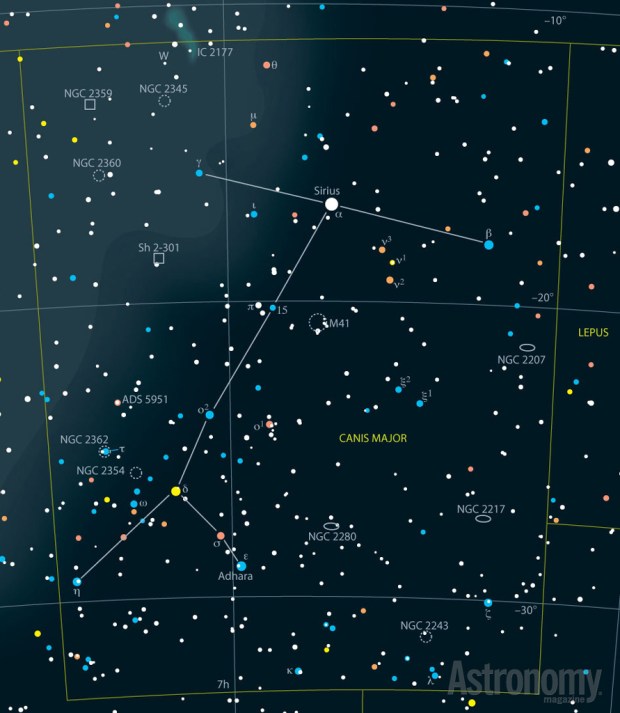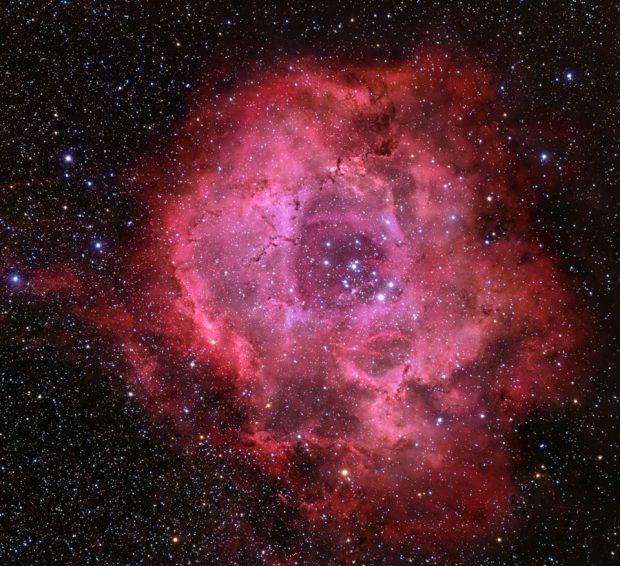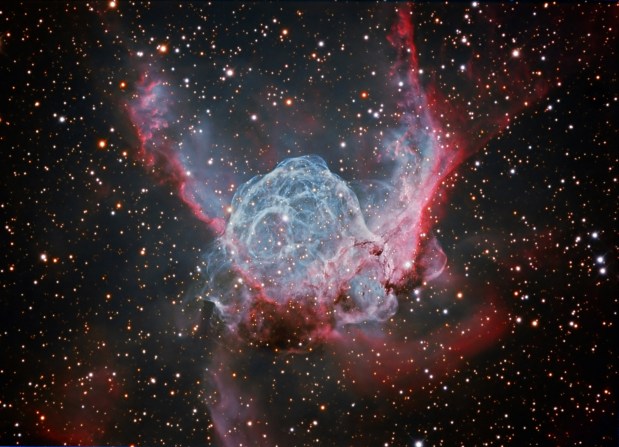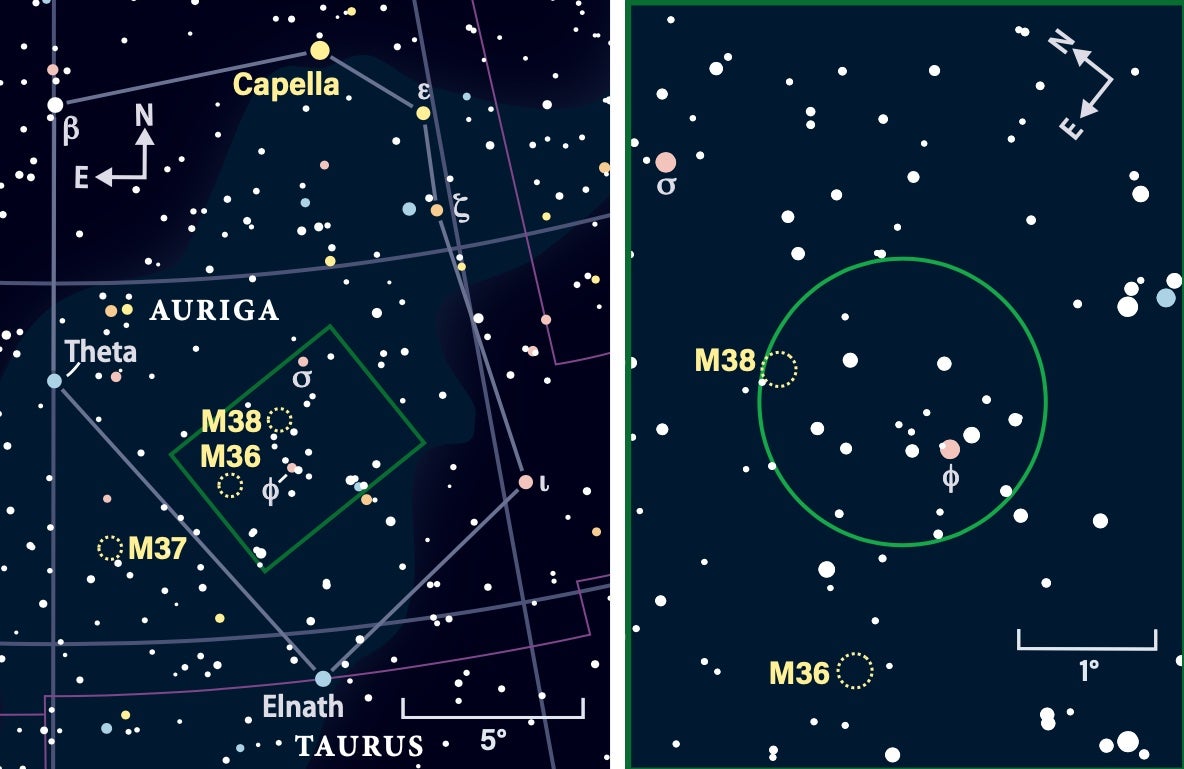The trickiest part of sketching large, complex nebulosity within a star field is accurate positioning of both the stars and the nebula’s structure. Begin by plotting the brightest stars in your sketch as references. Then build up bright nebulosity with the tip of a blending stump loaded with graphite. Plot additional stars as needed to help with positioning, and then render dark nebulosity with a sharpened vinyl eraser. Let’s take a look now at two choice nebulae that make great sketching targets.
The Rosette Nebula
Modest magnification can help you tackle an object notorious for its low surface brightness, such as the Rosette Nebula (NGC 2237–9/46), an emission nebula nestled within the “jowls” of the constellation Monoceros. Spanning 1°, this cloud of gas and dust has a wreath-like shape surrounding open cluster NGC 2244.
Radiation and wind from the cluster’s hot young stars contribute to the Rosette’s shape and reddish color. Every part of the nebula benefits from the use of an Oxygen-III or Ultra High Contrast filter, which really help dim the stars.
The nebula appears patchy with irregular edges through an 8-inch telescope at a magnification of 50x. The cluster’s brightest stars form two parallel chains with yellow-colored 12 Monocerotis shining the brightest at magnitude 5.9. Using the same magnification through a 12-inch scope reveals distinct dark lanes.
The Horsehead Nebula
This famous dark nebula lies silhouetted against the eastern edge of emission nebula IC 434 in the constellation Orion. To locate the Horsehead — also known as Barnard 33 — find Zeta (ζ) Orionis in Orion’s Belt, and then follow emission nebula IC 434 to the south. You’ll see the soft glow of reflection nebula NGC 2023 and two magnitude 7.5 stars running from the northeast to the southwest.
The Horsehead lies 9′ south of the middle star and appears as a dark 5′-wide thumbprint embedded in IC 434 through an 8- to 10-inch telescope. It becomes increasingly pronounced through larger apertures, and it’s possible to detect the horse’s “snout” protruding north through a 16-inch scope.
This elusive dark nebula responds well to a Hydrogen-beta (Hβ) filter, and though dark, pristine skies are a must when trying to locate it, finding the optimal exit pupil creates the recipe for a successful observation — and sketch.
Filters have specifications listed for the best exit pupil range. For example, the optimal range for my Hβ filter is 3 to 7 millimeters. So, which of my eyepieces should I use to observe through it?
To find the exit pupil of any eyepiece, divide its focal length by your telescope’s focal ratio. My telescope has an f/ratio of 4.5. So, a 20mm eyepiece would give me a (20/4.5) 4.4mm exit pupil, making it a good choice for this object.
A 12mm eyepiece gives an exit pupil 2.7mm across, while a 40mm eyepiece yields a whopping 8.9mm exit pupil. When the exit pupil is too small, the view will be excessively dark; too large an exit pupil means insufficient contrast.
Choosing the right magnification and increasing the contrast between a faint nebula and the background sky are two ways you can improve your odds of recording more detail. As a result, you will produce better sketches of these grand objects.


